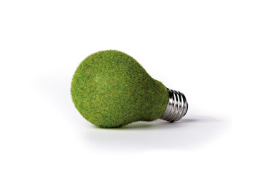For most people at the moment, Waste-to-Energy is one of those things they hear bandied around, but they don’t really know what it is. And that’s completely understandable, because, unless you work in the waste industry, why would you?
But, with it being an important part of the waste hierarchy, and another way to avoid landfill, we thought it would be worth ending the year with a proper explanation of what it’s all about. So here goes…
What is Waste-to-Energy?
In an ideal world, we would have no waste. But, at present, this isn’t very realistic, and is much more of a future target than a current reality. Things are improving, but we’re definitely still not there yet. So, what do we do with the waste we’ve got? As discussed in last month’s article on the waste hierarchy, the best option is to reduce what we use, followed by reusing what we’ve got, and, if neither of those are possible, recycle. However, some items can’t be recycled, so these can either go to energy recovery (aka Waste-to-Energy) or landfill. And this is where, even though it’s low down on the hierarchy, Waste-to-Energy is still a great option. This route provides a sustainable and environmentally-friendly way of disposing of waste that avoids landfill. As a business, it’s also great for improving your environmental credentials (helping you achieve zero-to-landfill status).
How does Waste-to-Energy work?
Arrival at the Waste-to-Energy plant
Once our operatives have collected your general waste from you, we’ll transport the material to a Waste-to-Energy plant and discharge the waste into a bunker. A grab crane operator then mixes the waste to ensure it gets burnt properly in the furnace. All the while, water sprays and induction fans operate to reduce dust and odours.
Incineration
Next, the crane loads the mixed waste into a feed hopper, and the material travels down a chute into the furnace. A series of grate bars then move the waste through the furnace, drying and burning it at soaring temperatures of approximately 1000°C. This creates hot flue gases, which will be used as a source of renewable energy, and incinerator bottom ash (IBA), which can be used in construction.
Energy generation
After that, the hot flue gases travel through a boiler, heating the water that runs through the boiler pipes. This water then turns into steam, causing a turbine to start moving, which, in turn, generates electricity!
Emissions
To avoid dangerous emissions, the gases from the burned waste are cleaned thoroughly. Lime is used to neutralise acidic gases and carbon, removing dioxins and heavy metals. The gases then pass through a fine fabric filter, which captures any remaining particles before the gases are released through a chimney – securing a sustainable and environmental process.
Other by-products (essentially IBA)
The incinerator bottom ash – produced as a by-product of burning the waste – drops into a quench tank and passes along a conveyor to a storage pit. While on the conveyer, magnets extract ferrous metals from the ash for recycling. The ash then gets transported to an ash recycling plant, where it gets turned into an aggregate replacement for construction materials.
The public often worry that Waste-to-Energy plants cause pollution and lower air quality, but hopefully the above shows how highly-regulated and well thought out these plants are. They have strict emissions limits and are regularly monitored, to ensure nothing harmful goes back out into the environment. As you can see, they’ve also been designed to get every possible useful material or gas out of the process, so it can be used again somewhere else.
Our experience of Waste-to-Energy
For us at Printwaste, Waste-to-Energy has been a game-changer. It has enabled us to help so many of our customers achieve zero-to-landfill status, and avoid all of the environmental issues that landfill brings. This is something we’re extremely proud of and aligns with our core values – to provide you with the best possible waste management services, while always having the planet in mind.
In 2017 alone, we managed to accumulate enough general waste from our customers to produce 814,450 kWh of energy. This is enough energy to make one cup of tea or coffee for the whole of the UK population. But with that statistic, we think it’s time to crack out the bubbles instead! On a serious note, this shows how important Waste-to-Energy is as part of the waste hierarchy, and as part of your waste disposal system. If you’d like to find out more, or want to have a chat with us about how it can help your business, give us a call on 01242 588600 or email us at sales@printwaste.co.uk.


